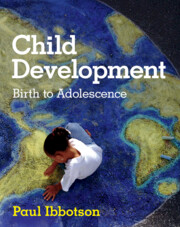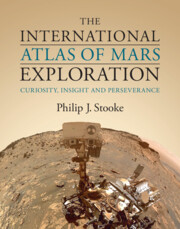Refine search
Actions for selected content:
135 results
24 - The Poetry of Antarctica
-
-
- Book:
- The Cambridge History of Australian Poetry
- Published online:
- 19 November 2025
- Print publication:
- 11 December 2025, pp 457-475
-
- Chapter
- Export citation
8 - The Winding Path
- from Part II - Discovery
-
- Book:
- The Artist's Life
- Published online:
- 04 November 2025
- Print publication:
- 20 November 2025, pp 49-58
-
- Chapter
- Export citation
4 - Entangled Biographies and the Imperialist Creation of Historical Knowledge
-
- Book:
- Negotiating Imperialism
- Published online:
- 08 November 2025
- Print publication:
- 20 November 2025, pp 111-150
-
- Chapter
-
- You have access
- Open access
- HTML
- Export citation
4 - ‘Several University Gentlemen, who have quite altered their Tone’: The Problem of the British Slave Trade
-
- Book:
- The University of Cambridge in the Age of Atlantic Slavery
- Published online:
- 12 September 2025
- Print publication:
- 30 October 2025, pp 104-137
-
- Chapter
-
- You have access
- Open access
- HTML
- Export citation
Chapter 38 - The Atlantic and the Americas
- from Asia and the Americas
-
-
- Book:
- The Cambridge Guide to Global Medieval Travel Writing
- Published online:
- 03 October 2025
- Print publication:
- 02 October 2025, pp 672-685
-
- Chapter
- Export citation
1 - Appropriation
- from Part I - Promising Environments: Material Premises of Growth and Power
-
- Book:
- Burning Swamps
- Published online:
- 06 September 2025
- Print publication:
- 25 September 2025, pp 27-59
-
- Chapter
- Export citation
Nourishing food, clean air and exercise: medical debates over environment and polar hygiene on Robert Falcon Scott’s British National Antarctic expedition, 1901–1904 – CORRIGENDUM
-
- Journal:
- Medical History , First View
- Published online by Cambridge University Press:
- 15 September 2025, p. 1
-
- Article
-
- You have access
- Open access
- HTML
- Export citation
Multi-method geochronology and isotope geochemistry of carbonatites in the Aileron Province, central Australia
-
- Journal:
- Geological Magazine / Volume 162 / 2025
- Published online by Cambridge University Press:
- 02 September 2025, e33
-
- Article
-
- You have access
- Open access
- HTML
- Export citation
Frederick George Jackson, Indigenous knowledge, and the “heroic age” of polar exploration
-
- Journal:
- Polar Record / Volume 61 / 2025
- Published online by Cambridge University Press:
- 13 August 2025, e20
-
- Article
-
- You have access
- Open access
- HTML
- Export citation
2 - Why Is Innovation Difficult?
-
- Book:
- Innovation Management
- Published online:
- 06 June 2025
- Print publication:
- 10 July 2025, pp 14-23
-
- Chapter
- Export citation

Child Development
- Birth to Adolescence
-
- Published online:
- 19 June 2025
- Print publication:
- 12 June 2025
-
- Textbook
- Export citation

The International Atlas of Mars Exploration
- Curiosity, InSight and Perseverance
-
- Published online:
- 13 June 2025
- Print publication:
- 22 May 2025
Chapter 18 - Imaginary Space
- from Part III - Applications and Extensions
-
-
- Book:
- Space and Literary Studies
- Published online:
- 07 May 2025
- Print publication:
- 22 May 2025, pp 303-318
-
- Chapter
- Export citation
5 - Recommender Systems from Multiple Perspectives
-
- Book:
- Deep Learning Recommender Systems
- Published online:
- 08 May 2025
- Print publication:
- 22 May 2025, pp 143-190
-
- Chapter
- Export citation
Chapter 12 - A Heuristic Exploration into the Social and Emotional Intelligences
-
- Book:
- Essentials of Social and Emotional Intelligences
- Published online:
- 25 March 2025
- Print publication:
- 27 March 2025, pp 261-270
-
- Chapter
- Export citation
Germs, infections, and the erratic ‘natural laboratory’ of Antarctica: from Operation Snuffles to the Killer Kleenex
-
- Journal:
- Medical History / Volume 69 / Issue 2 / April 2025
- Published online by Cambridge University Press:
- 17 January 2025, pp. 305-326
-
- Article
-
- You have access
- Open access
- HTML
- Export citation
Comment on “Correspondence Analysis used Complementary to Loglinear Analysis”
-
- Journal:
- Psychometrika / Volume 53 / Issue 2 / June 1988
- Published online by Cambridge University Press:
- 01 January 2025, pp. 287-291
-
- Article
- Export citation
Count Otani Kozui’s 1900 northern cruise: A Japanese “explorer tourist” in the Nordic Arctic
-
- Journal:
- Polar Record / Volume 60 / 2024
- Published online by Cambridge University Press:
- 29 October 2024, e19
-
- Article
-
- You have access
- Open access
- HTML
- Export citation
Using augmented reality to assess spatial neglect: The Free Exploration Test (FET)
-
- Journal:
- Journal of the International Neuropsychological Society / Volume 30 / Issue 7 / August 2024
- Published online by Cambridge University Press:
- 18 September 2024, pp. 635-642
-
- Article
-
- You have access
- Open access
- HTML
- Export citation
Chapter 3 - The Expert Transition Cycle
- from Part I - Transitions
-
- Book:
- Transition Expertise and Identity
- Published online:
- 30 May 2024
- Print publication:
- 06 June 2024, pp 23-36
-
- Chapter
- Export citation
